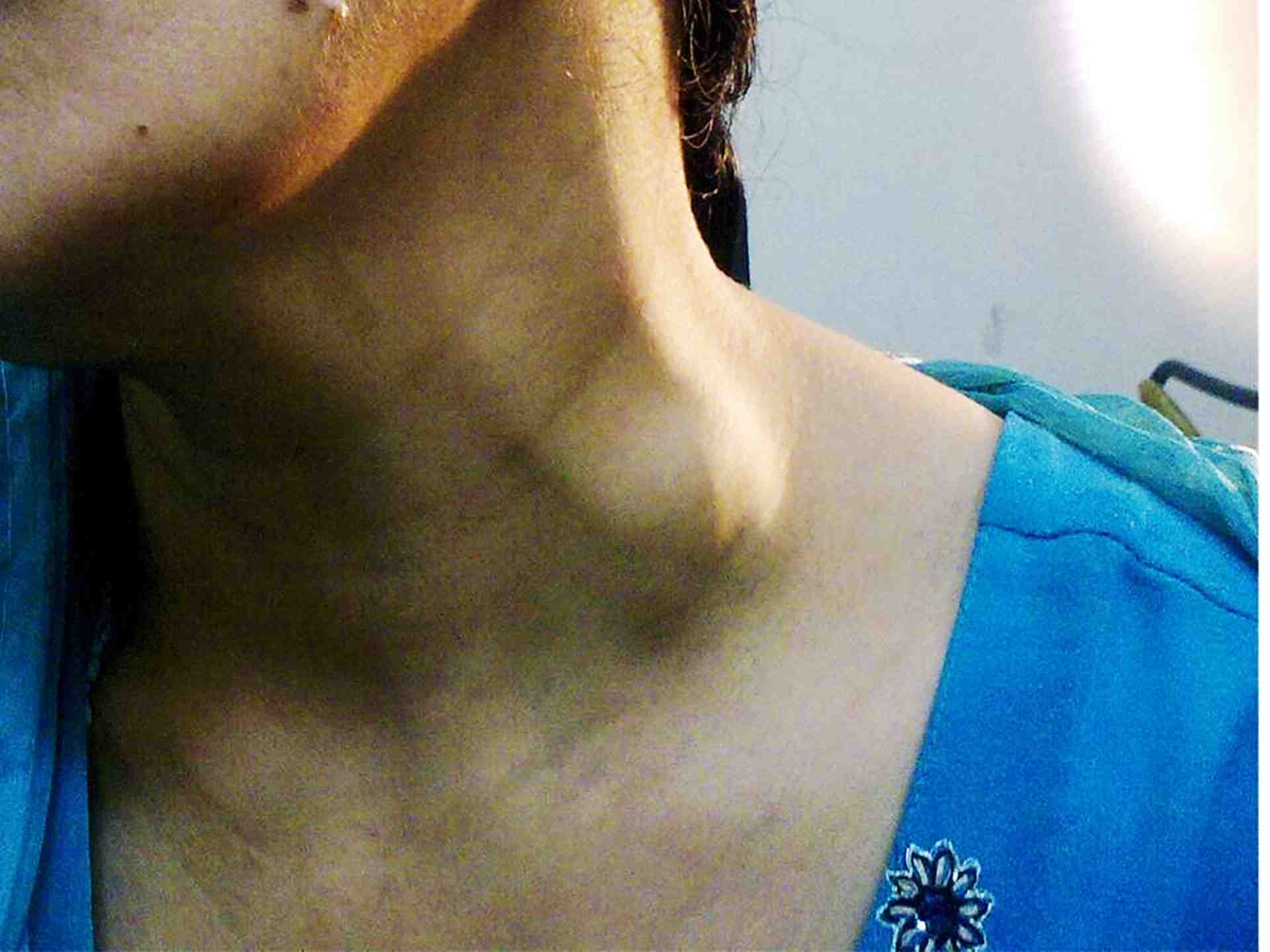Definition
Neck vein thrombosis is a blood clot (thrombus) that develops in the neck veins, specifically the internal jugular vein. This often-undiagnosed condition is a complication of head and neck infections, surgery, IV tube insertion into large vessels, neck massage, malignancy, and needle-based substance abuse.
Causes
The most common cause of neck vein thrombosis is the insertion of a tube into a large return vein. Usually, this insertion is followed by medication to prevent blood clots, such as heparin. However, the tube's placement disrupts blood flow and damages the vein's innermost layer. Both of these factors raise the risk of blood clots.
Other causes of neck vein thrombosis are:
- Lemierre's syndrome. It is a throat infection caused by Fusobacterium bacteria which can cause inflammation and infection of the back blood vessels in the neck
- Infection of the connective tissue. It can result from the spread of infections in the dental area or jaw
- Infection from a used syringe. Infections caused by used syringes are at high risk of infection with methicillin-resistant Staphylococcus aureus (MRSA) bacteria, which are resistant to many antibiotics
Risk Factor
Conditions that cause increased blood viscosity raise the risk of neck vein thrombosis. These conditions can be congenital disorders, such as hypercoagulable status (a condition in which the blood is extremely thick and easily clots).
Meanwhile, acquired conditions such as a history of blood clot obstruction, malignancy, pregnancy, birth control pills, injectable drugs, injury, and immobilization (staying in one position for a long time) can all cause blood to thicken.
Symptoms
Neck vein thrombosis symptoms are frequently mild or invisible, resulting in misdiagnosis. The following symptoms can occur in neck vein thrombosis, depending on the number of occurrences:
- Fever
- Neck mass or swelling
- Neck pain
- Infection that spreads throughout the body
- Pulmonary complications
- Blood buildup in the back blood vessels near the heart
- Fat accumulation near the lungs
- Paralysis of the muscles of the tongue, throat, and neck
- Nerve problems that pass through the neck
- Signs of increased pressure inside the head: head pain and double vision
Diagnosis
The D-dimer test is a common thrombosis test that involves the breakdown of a substance that causes blood to clot. Elevated D-dimer levels are found in cancer, generalized infection, surgery or injury, and pregnancy. Other tests include ultrasound with Doppler, which detects blood clots in blood vessels. A computed tomography (CT) scan can reveal flow problems in the a blood vessels.
If facilities are available, tests for deficient protein levels, elevated clotting factors, a lack of specific substances, or autoimmune immune problems may be performed. The doctor may also examine the blood clotting time to look for any potential blood clotting issues.
If there is an infection in the return veins, a blood culture may be done. Blood culture is the process of cultivating germs from blood. If an infection has spread to the blood, a blood culture can show the presence of germ. The germs are cultured for a few days.
Management
Uncomplicated neck vein thrombosis is treatable with medication. Before administering medications, the doctor will assess the patient's risk of bleeding and adjust the drug administration accordingly. Medications may include anticoagulants, thrombolytics, or antibiotics.
If there is an IV connected to a large return blood vessel, it should be removed immediately. However, it should not be removed if the patient is at risk of dying without it.
If there is an infection in your veins, the doctor will prescribe injectable antibiotics. Usually, antibiotics alone are enough to treat the infection. If there is a serious blood clotting problem, the doctor may prescribe blood thinners. These antibiotics are administered in the hospital and may be continued for up to 4–6 weeks.
Surgery may be performed if there are complications, such as a neck infection that needs to be cleaned. This cleaning is also done to remove dead or infected tissues. When there is pus collection in the blood vessels, the blood vessels may be opened to clear the pus to prevent complications such as the spread of infection.
Complications
Complications of neck vein thrombosis can include the formation of blood clots in other sites, such as the pulmonary veins, subclavian vein of the shoulder, and sagittal sinus of the brain. Additionally, blockages in the large return veins can cause swelling in the neck and face. Other complications may include increased pressure inside the head and swelling of the throat and lower airways.
Neck-vein thrombosis has a variable mortality rate. One study showed that the mortality rate was as high as 44%. The risk of death is higher in patients over 75 years old, those who are not treated with blood thinners, and those who use an infusion tube in the central return vein.
Prevention
The majority of cases of neck vein thrombosis are asymptomatic, making prevention difficult. Health professionals must therefore recognize symptoms. Symptoms may include swelling, redness, warmth, and pain at the jaw's angle or on the side of the neck.
However, recurrence can be avoided by screening for cancer, blood clotting issues, autoimmune disorders, and infections, as these conditions may increase your risk of developing neck vein thrombosis.
When to See a Doctor?
Neck vein thrombosis often causes no symptoms. However, if you experience swelling, redness, warmth, and pain in the jaw and neck region, you should consult with a doctor immediately.
Discuss your risk of developing the condition with your doctor if you are undergoing cancer treatment, taking birth control pills, or are pregnant.
If you are diagnosed with this condition, you will require regular blood-thinning therapy, even if you do not have any symptoms. You should follow your doctor's advice, as neck vein thrombosis has complications that can lead to disability and death.
Looking for more information about other diseases? Click here!
- dr Anita Larasati Priyono
Lee, Y., & Siddiqui, W. (2021). Internal Jugular Vein Thrombosis. Retrieved 24, 2022, from https://www.ncbi.nlm.nih.gov/books/NBK541111/
Mueller, D. (2022). Internal Jugular Vein Thrombosis: Background, Anatomy, and Pathophysiology. Retrieved 24, 2022, from https://emedicine.medscape.com/article/461577-overview
Scerrati, A., Menegatti, E., Zamboni, M., Malagoni, A., Tessari, M., Galeotti, R., & Zamboni, P. (2021). Internal Jugular Vein Thrombosis: Etiology, Symptomatology, Diagnosis and Current Treatment. Diagnostics, 11(2), 378. doi: 10.3390/diagnostics11020378



/630bbc8397ada.jpg)





